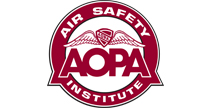All at once
(ERA12FA196)
 By David Jack Kenny
By David Jack Kenny
Someone defined intuition as that little voice that tries to convince you that the things that should be true actually are. Short flights ought to be safer than long ones, and daytime VFR should be less risky than flying in IMC or at night. Tower control can be expected to minimize the risk of traffic conflicts in the pattern. All sound plausible; none can be depended on. Rules of thumb are no substitute for keeping your head in the game, because a great deal can happen in a hurry.
Just before 5 p.m. on Feb. 29, 2012, a Cirrus SR22 took off from Valkaria, Fla., on the 10-mile hop north to Melbourne. The 515-hour private pilot was accompanied by two passengers. A few minutes after takeoff, the pilot contacted Melbourne Tower from “Radiation,” an established VFR reporting point south of the airport. The tower controller instructed him to report midfield on a right downwind for Runway 9R, which the pilot acknowledged. A few seconds later, the controller cleared an SR20 on a straight-in five-mile final to land on the same runway.
Related Links
"Operations at Towered Airports" Safety Advisor
"Say It Right: Mastering Radio Communication" online course
"Pilot/controller responsibilities" Safety Pilot article
"Essential Aerodynamics: Stalls, Spins, and Safety" online course
Melbourne is a busy field. AOPA Airports lists it as the home base of four flight schools, plus a flying club, two more FBOs, and three repair and maintenance businesses. On that clear Wednesday evening, operations on the two parallel runways involved at least three other airplanes and a helicopter; two more GA aircraft, and a Delta DC-9 waited for takeoff clearances. Apparently the controller expected the SR22 to go to the FBO on the north side of the field; he told the pilot, “I’ll get you 9 Left if I can, but I’m a little busy right now.” A few seconds later he offered the choice of a landing on 9R or an extended downwind to follow a Cessna on a six-mile final.
The pilot responded, “Ah, 9 Right’s fine,” and explained that he was bound for the other FBO, at the far end of that runway. He also requested a long landing, which made sense: 9R is 10,181 feet long. The controller approved the long landing and cleared the SR22 to land on 9R. He said later that he expected it to enter the downwind leg and fly a “normal pattern,” but he did not instruct its pilot to do so.
Thirty-one seconds after issuing the landing clearance, the controller asked the SR22 pilot whether he saw the SR20 on a one-mile final. This was his first mention of conflicting traffic. However, rather than joining the downwind, the SR22 pilot had proceeded directly into a tight right base. This also made sense, given his intention to land long—and, as the NTSB noted, was “permissible based on the clearance to land.” He told the controller, “I’m on a real short base for 9 Right to land now.”
Hearing this, the instructor in the SR20 took the controls, added power, began a gentle climb with a sidestep to the left, and then spotted traffic above and ahead of him. At the same time, the controller told the SR22 pilot, “No, sir, I needed you to extend to follow the Cirrus out there on a mile final, cut it in tight now, cut it in tight for 9 Right.” The SR22 began an abrupt left turn; according to the instructor in the SR20, “He began a 30-45 degree bank turn to the left in front of us at our one o'clock. … I then witnessed an accelerated stall, 90 degree bank angle with a one to two turn spin that ended up nose first into the ground.” The first officer in the DC-9 agreed: “The Cirrus … made an abrupt left turn while simultaneously appearing to level off and/or attempting to climb…. clearly initiated an accelerated stall at approximately 150-200 feet AGL … continued to roll left until it was inverted and started an abrupt … pitch straight towards the ground.” The Delta first officer was one of several witnesses who saw its ballistic parachute deploy—perhaps 100 feet above ground level with the airplane upside down. The Cirrus crashed nose-first, killing all three on board.
The NTSB attributed the accident to “The pilot's abrupt maneuver in response to a perceived traffic conflict, which resulted in an accelerated stall and a loss of airplane control at low altitude.” The board has a point. However, it also took the unusual step of citing “the air traffic controller's incomplete instructions, which resulted in improper sequencing of traffic landing on the same runway.” It has a point there, too.
Still, traffic avoidance is ultimately the responsibility of the pilot in command. Early and close attention to the frequency helps alert you to other inbound aircraft. Knowing their positions makes it easier to figure out whether ATC clearances make sense, or clarification might be helpful. Most importantly, a sound understanding of aerodynamics—especially what notto do and when—can be crucial when unexpected things begin happening too quickly.